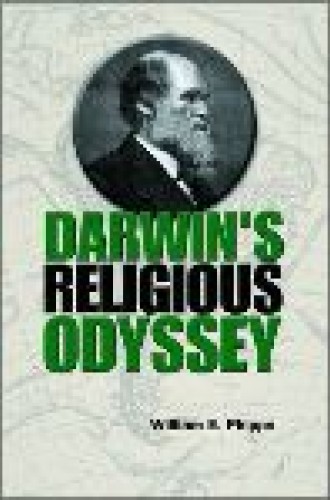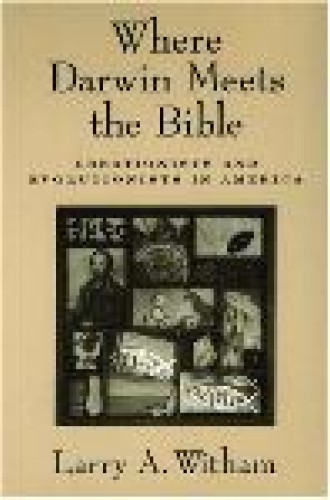Darwin's Religious Orthodoxy/Where Darwin Meets the Bible
Few scientists have been as influential and controversial as Charles Darwin. Darwin’s theory of evolution by natural selection not only reinvented modern biology in all its branches but also rocked theology and religion in ways that resound to this day. Does Darwinism inevitably lead to atheism, as critics (and some proponents) of natural selection claim? Is evolution by natural selection truly a scientific theory, worthy of being taught without qualification in public schools? Or can one be both a Darwinist and a committed Christian? What did Darwin himself think?
Two recent books make a distinctive contribution to thinking about these questions. William E. Phipps, emeritus professor of religion and philosophy at Davis and Elkins College, seeks to chart Darwin’s religious development. Starting with Darwin’s birth and family background, Phipps recounts his early and (largely) conventional Anglican faith, the development of his theory of evolution and the changes in his religious beliefs wrought by his scientific work and personal tragedies.
Those who are familiar with Darwin’s biography will find few surprises here, but Phipps does a fine job of noting many of the personal and contextual factors that shaped Darwin’s attitude toward religion. There is a tendency to read the current creation-evolution debate back into Darwin’s time, ignoring how different 19th-century England was from 21st-century America. Like many in his day, the young Darwin could be impressed by William Paley’s Natural Theology, the classic work that infers God’s designing hand in biology, but still critical of the creedal suppositions of the church.
Phipps correctly notes that Darwin was no simple atheist and that Darwin’s scientific work was not the only, and perhaps not even the most important, factor in his changing attitudes toward religion, resulting in what Phipps describes as a “reverent agnosticism.” Darwin’s deep moral convictions, held independently of and in spite of his support of natural selection, led him to doubt the goodness of God in the face of so much evil. Personal dimensions, most notably the childhood death of a daughter and the Unitarian faith of his wife, Emma, also played important roles.
While Darwin’s Religious Odyssey is primarily historical, it clearly has a second agenda: to counter some of the positions in contemporary debates about Darwin. In places, this agenda slips through in editorializing comments and anachronisms, as in the labeling of Darwin’s opponents as bibliolaters. This agenda is made plain in the final chapter, in which Phipps argues that Darwin’s life and work provide insights for modern theology.
In contrast to Phipps’s historical approach, Larry Witham’s focus is on the present. A journalist with the Washington Times and author of several books on religion, Witham places the reader front and center in the ongoing creation-evolution debate. He brings together an impressive breadth of material. At times the book reads like a “who’s who” in the current Darwin debates, and Witham provides biographical sketches (including anecdotes from numerous interviews) of many of the key figures in evolutionary science and its creationist opposition.
The book’s most valuable contribution, however, is its detailed recording of the see-saw battle over the teaching and public funding of evolutionary and creationist viewpoints. Witham deftly traces the rise and fall of creation-science in the 1980s, the development of the intelligent design movement in the 1990s, and the launching of staunch opposition and watchdog groups, such as the NCSE (National Center for Science Education). He also notes the many different levels and places that battles between the opposing forces are fought, from local school boards to state education guidelines (made famous by the controversy in Kansas) to the statements of presidents.
Throughout, the limelight is focused on the extremes that dominate the debate, particularly on the religion side, where evangelical and fundamentalist voices are given the most attention. But Witham doesn’t ignore the complexity and diversity of positions. Theologians such as John Haught and John Polkinghorne, who see no conflict between evolutionary theory and Christian faith, make appearances, and careful attention is given to surveys that have been conducted on the religious beliefs of scientists.
Both of these works have their weaknesses, particularly a tendency to treat the intellectual side of their subject matter lightly. Witham, for instance, describes the various players and factions well but gives little attention to what makes the intelligent-design movement distinct from the earlier creation-science. Despite this, both works fill important places in the literature on religion and evolution. Knowledge of the material they cover is essential for any genuine understanding of the relationship of Christianity and evolutionary biology today.






